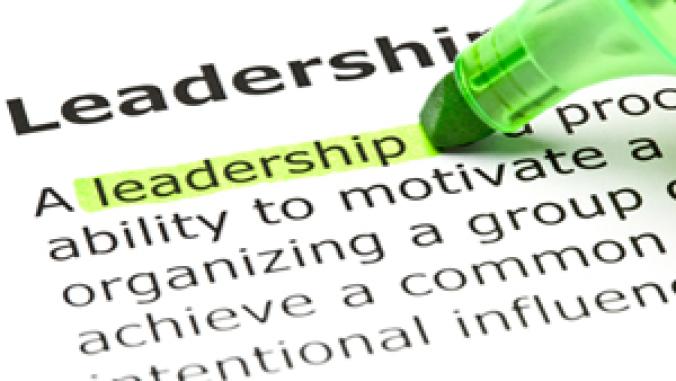What Innovation Looks Like and How to Make It Happen
<p>Rob Shelton, director at the consultancy PRTM and co-author of "Making Innovation Work," draws out sustainability and innovation leaders from Procter & Gamble and Waste Management about how their very traditional firms are taking a new approach to business.</p>

What does innovation look like and how does it happen, especially in very large, tradtional companies?
Rob Shelton, director at the consultancy PRTM and co-author of "Making Innovation Work," provided insight on the subject in talks today with sustainability and innovation leaders from Procter & Gamble and Waste Management about how their firms are taking a new approach to business.
The conversations with P&G Vice President for Global Sustainability Len Sauers, P&G Chief Innovation Catalyst Stephen T. Meller and Jim Hall, managing director of Waste Management's recently formed Green Squad, dominated the morning on the second day of the GreenBiz Innovation Forum. Shelton drew out the executives on the strategies pursued by their firms against a backdrop of a broader discussion of innovation -- the difference between incremental and breakthrough innovation and the elements that can spur or hinder game-changing revelations.
 For consumer products behemoth Procter & Gamble, which got its start 174 years ago as a candle-maker, sustainability has long been an aspect of the business -- though its importance has waxed and waned among company priorities -- and innovation has been a key to the firm's longevity, Sauers and Meller said. What's changed is P&G's approach to the concepts.
For consumer products behemoth Procter & Gamble, which got its start 174 years ago as a candle-maker, sustainability has long been an aspect of the business -- though its importance has waxed and waned among company priorities -- and innovation has been a key to the firm's longevity, Sauers and Meller said. What's changed is P&G's approach to the concepts.
"I have seen sustainability come and go," said Sauers, a 24-year P&G veteran. "There have been times when it is very, very important and times when it goes away."
In recent years, sustainability again came to the fore within the firm, and in internal conversations the subject came to be viewed as a matter of corporate responsibility. "We saw it as the right thing to do," Sauers said. "It wasn't until 2003, 2004, 2005 that we saw more of it (discussion of sustainability) externally, and it wasn't until 2007 that we saw it as a business opportunity."
 At the time, the firm set a goal of selling $50 billion in sustainable products by 2012 as part of an initiative that included focusing on product innovation, operations and supply chain and stakeholder relations. This past September, the company unveiled its new vision for sustainability.
At the time, the firm set a goal of selling $50 billion in sustainable products by 2012 as part of an initiative that included focusing on product innovation, operations and supply chain and stakeholder relations. This past September, the company unveiled its new vision for sustainability.
They include 10-year goals, to be achieved by 2020, that call for:
• Replacing 25 percent of petroleum-derived raw materials with sustainably sourced, renewable materials;
• Reducing packaging by 20 percent per consumer use;
• Powering company operations with 30 percent renewable energy; and
• Reducing waste from manufacturing to less than 0.5 percent
Ultimately, P&G wants to use 100 percent renewable or recycled materials for all products and packaging, power its plants with 100 percent renewable energy and have zero consumer and manufacturing waste go to landfills.
With the new vision, the firm set a higher bar for its long-term goals for environmental responsibility. "We were not sure that the vision that we set in 2007 was enough to ensure that we would grow responsibly," Sauers said. "Today we serve four billion consumers, we want to serve five billion ultimately."
The new goals also reflected the change in the company's approach to sustainability. "In the past, sustainability was handled as an issue to be managed," Sauers said. "What is different this time is that sustainability is built into the business, it is part of the business, (and) if you integrate it into the business then people want to do it."
That integration, Sauers said, includes maintaining a "no tradeoffs" criteria that applies equally to sustainability benefits for customers and company investments in on-site renewable energy projects. "There are no tradeoffs, there is no either/or, there is no compromise for sustainability," he said, a product has to "win in blind test" and a solar project, for example, has to deliver at the same ROI as any other capital project.
As a further example of embedding the concept into the business, increasingly sustainability has served as motivation for innovation at P&G, and like sustainability, the view and pursuit of innovation have also evolved within the company, Meller said.
 "We've had a culture focused on innovation," said Meller, noting that the firm has 23 research and development centers on four continents with 9,000 people devoted to R&D. "It's everybody's job."
"We've had a culture focused on innovation," said Meller, noting that the firm has 23 research and development centers on four continents with 9,000 people devoted to R&D. "It's everybody's job."
What's different is the company's approach to innovation through collaboration and input from outside sources, particularly for game-changing -- or disruptive, as Meller described it -- ideas. As a result of increased engagement, by 2008 P&G was sourcing 50 percent of innovations from outside the company, after years of getting none from outside.
Generally, said Meller, "you don't hire the people who do disruptive innovation. They may be in the organization, but they don't stick their heads up. That's been a learning for us -- to look for them in the company and to hire them."
The firm has also created Meller's position and unit within the firm to look at new ways to do business and to spur innovation in areas ranging from products to technology.
 Shelton turned to Hall from Waste Management to talk about how a firm transforms its business model. Waste Management has more than 20 million residential, industrial, municipal and commercial customers and posted $11.79 billion in revenue in 2009.
Shelton turned to Hall from Waste Management to talk about how a firm transforms its business model. Waste Management has more than 20 million residential, industrial, municipal and commercial customers and posted $11.79 billion in revenue in 2009.
The company built its business on hauling rubbish to landfill and is now moving to a model based on materials handling logistics. "You're helping customers not have trash and helping them manage materials upstream," Shelton said, noting that the change affects the dynamics of the value the firm delivers, how the company delivers value, the value that's created, and who is on the receiving end of value.
"Most companies change just one or two of those at a time," Shelton said to Hall. "My questions to you are: Have you lost your mind and when did you lose it ?"
"The transformation has been critical to us," Hall responded with equanimity. "Our CEO Dave Steiner has said, 'We're going to grow or die.' "
Changes within the industry and from customers made it clear that to grow, the company must change the service it delivers, Hall said. "Customers were saying, 'We want zero waste programs.'
"It was this perfect storm of information we were getting from the marketplace, from consultants and from senior leaders who were percolating these ideas and deciding there's opportunity for us if we change our business model."
In addition, there were clear signals from firms such as Walmart -- "When you have a company saying things like zero waste and no landfill or Dumpsters behind our stores, well..." -- and research that points to materials value in what people throw away, some $8 billion to $10 billion a year, Hall said.
WM's response, launched this year, was the realignment of the company into five customer-focused industry segments. "We're now organized around these industry verticals -- not selling assets, (but) selling what's between our ears," Hall said, describing the firm's new aim to provide consultive services to clients to help them achieve their waste management goals.
"That's a rather stark shift," Shelton said, "and it raises questions about how good you're going to be at it."
Acquisition of new skills and partnering will be key, and the company recognizes that, Hall replied. Also, "we're doing a lot of prototyping -- live prototyping," he said, underscoring one of the conference themes. "We sit in front of customers every day and help them find solutions."
Asked about challenges posed by the company's new business model and acceptance of change outside the company and within, Hall said there has been little skepticism from the marketplace, which sought the change.
Inside the firm, "it's our job to show that under this new model the company makes even more money, that by diverting from landfill we're finding higher value use for those materials," said Hall, who leads WM's 30-person consultation arm. "It's not like there's a big bang and instantly you're converted."
In a Q&A session, a question was raised about the waste management industry and the reported sales of as much as 50 percent of recycled plastics to China for use as fuel rather than being recycled into other products in this country.
"We have commodity analysts," Hall said of his company, "and they are going to go wherever the market dictates ... and go wherever we get the most value." Noting "we have to run the business like a business," Hall added, "we would we like to have a closed loop system within the U.S."
Also in the Q&A portion, Laurie Fried, chief sustainability officer for West Marine, praised Waste Management for striking out in a new direction. "I just want to applaud your efforts," she said. "I think there is definitely a need for what you are doing."
Photos by Goodwin Ogbuehi, http://flickr.com/photos/yoshikatsu.





